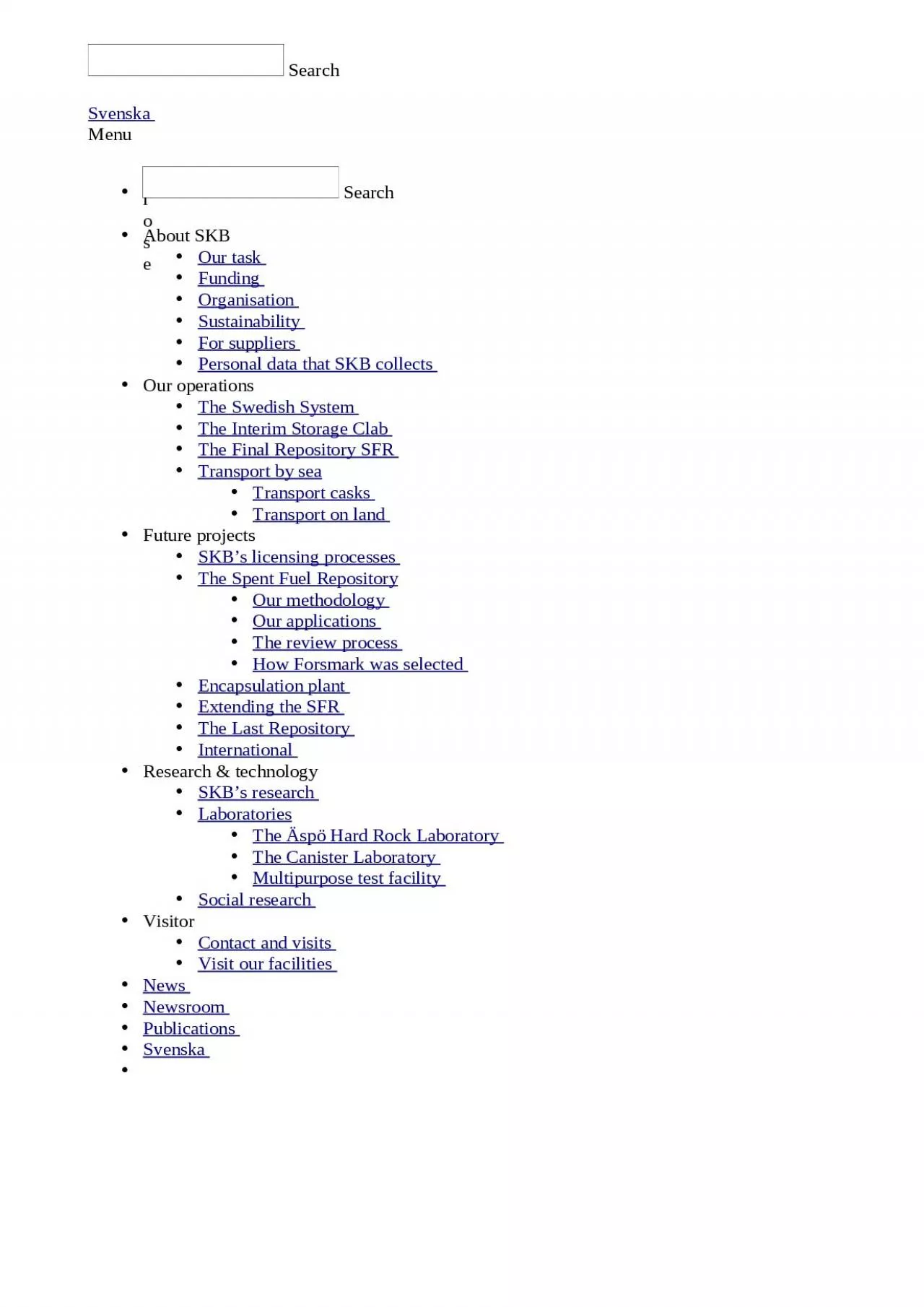

Improving the geological safety case knowledge of the behaviour of organic containing longlived intermediate level wastes MIND WP1 Objectives Reduce uncertainty of safetyrelevant microbial processes controlling radionuclide chemical and gas release from longlived intermediate level wastes I ID: 928762
Download Presentation The PPT/PDF document "IGD-TP EF6 CORI MIND WP1" is the property of its rightful owner. Permission is granted to download and print the materials on this web site for personal, non-commercial use only, and to display it on your personal computer provided you do not modify the materials and that you retain all copyright notices contained in the materials. By downloading content from our website, you accept the terms of this agreement.
Slide1
IGD-TP EF6 CORI MIND WP1
Improving the geological safety case knowledge of the behaviour of organic containing long-lived intermediate level wastes
Slide2MIND WP1 Objectives
Reduce uncertainty of safety-relevant microbial processes controlling radionuclide, chemical and gas release from long-lived intermediate level wastes (ILW) containing organics (SRA Key topic 2 sub topic 2)
To quantify the combined rates of biodegradation,
radiolysis and hydrolysis of anthropogenic organic polymers and cellulose present in ILW under disposal conditions.
To
identify key chemical species resulting from organic ILW biodegradation, radiolysis and hydrolysis and their effects on radionuclide speciation and mobility.
To establish the in situ chemical and physical conditions that may limit microbial activity in EU repository concepts for ILW utilising cementitous
materials within a neutral pH host rock.To examine the microbial generation and consumption of CH4 and H
2 under ILW repository conditions.To understand the effect of ILW heterogeneity on bioprocess pathways, pH and redox conditions, barrier degradation and radionuclide release.
This project has received funding from the Euratom research and training programme 2014 - 2018 under Grant Agreement no. 661880
2
Slide3Task 1.2Rate and mechanism of biodegradation of ILW organic polymers affected by radiation, under repository relevant conditions.
60Co ϒ irradiation of organicsMostly high pH Ca(OH)
2 buffered conditions
Study biodegradation of radiolysis products by; cement pH adapted microbes at high pH,indigenous microbes from URLs under neutral pH
Radionuclide
interactions with degradation productsThis project has received funding from the Euratom research and training programme 2014 - 2018 under Grant Agreement no. 661880
3
Slide4Organic Materials
Halogenated organics (PVC) including additives (e.g.
pthalates
)Manchester; irradiation, biodegradation and radionuclide redox studiesIon exchange resins (DVB styrene) Irradiation at ManchesterLab and in situ biodegradation studies at EPFL
Irradiation and biodegradation by RCR-REZ and TUL Bitumen
SCK•CEN; irradiation and biodegradation This project has received funding from the Euratom research and training programme 2014 - 2018 under grant agreement No. 661880
4
Slide5Other Relevant StudiesAlkali cellulose degradation
Manchester; effect of irradiation on CDPs ISA biodegradation under cement buffered and groundwater pH conditionsRadionuclide interactionsHZDR will examine (UV-vis, TRLFS, IR,
XAS) radionuclide complexation with aqueous biodegradation products from WP1 partners and with model substancesUGR will examine radionuclide association with solid products (electron microscopy based techniques
)Manchester bio-reduction of U etc utilising organic radiolysis products This project has received funding from the Euratom research and training programme 2014 - 2018 under grant agreement No. 661880
5
Slide6OutlookA wide range of organic materials are present in ILW Degradation behaviour will depend on
wasteform conditions (pH), heterogeneity etcThe
MIND project begins the investigation of the combined effects of radiolysis/hydrolysis and biodegradationIrradiation
studies are mainly scheduled in the first 2 years of the MIND projectThe initial results from MIND irradiation studies should inform any future project that may result from CORIIn later years, specific biodegradation studies could be undertaken considering
radiolysis products resulting from a wider range of irradiation studies under taken by a CORI project
Funding of future collaborations would need to be consideredThis project has received funding from the Euratom research and training programme 2014 - 2018 under grant agreement No. 661880
6